- Home
- Technical Cooperation Projects
- Index of Countries
- Asia
- Timor-Leste
- The Project for Increasing Farmers Households' Income through Strengthening Domestic Rice Production in Timor-Leste
- Project News
- [No. 23] Farmers in the Project Sites realized the benefit of line transplanting!!
Project News
2017-12-20
[No. 23] Farmers in the Project Sites realized the benefit of line transplanting!!
It was recently observed that the selected farmers in Maliana I and Buluto already realized the benefit and effectiveness of the line transplanting after they experienced it themselves through the Comparative Cropping introduced by the Project during the second cropping of this year.
In the past, farmers thought that the line transplanting requires much labour force, but after they experienced Line marker first-hand, they observed that it is more pratical and faster than their previous practice of using strings to mark lines.
In addition, some farmers in Maliana I have already noticed the outcome of the Comparative Cropping through the partial yield survey conducted by the Project. Through the survey, they observed that even though the two plots exactly have the same size, the line transplanting plot produced more yields compared to the one of the random transplanting. On the other hand, farmers in Buluto noticed the initial difference of the line transplanting by looking at the current growth of their paddy in the Comparative Cropping. According to them, the paddy in the line transpanting plot got much bigger and healtier compared to the ones in the random transplanting without the intervention of the chemical fertilizer.
Mr. Leonardo Batudasi (60), a farmer from Rai-fun village and Mr. Eduardo Gonsalves (60), another farmer from Lahomea village previously thought that the line transplanting would require additional cost for hiring the labour, but after they experienced the Comparative Cropping, they realized that the work could be done by less man power and the family members alone can do it without hiring labour. In addition, in the past they thought that the Push Weeder and the Line Marker were heavy to be used, but after they experienced those tools, the two noticed that they were practical and easy to be applied.
Mr. Elias Soares (41) a farmer from Vemasse Tasi initially thought that the paddies could grow well only when farmers applied chemical fertilizer. Through his personal experience of the Comparative Cropping, he slowly started to notice that only regular supervision could help him to produce the good results.
Moreover, Mr. Soares observed that the paddies in his line transplanting plot grew much quicker and healthier compared to the random transplanting plot without chemical fertilizer.He eventually realized that proper water and weed control can help him from spending extra money.
Mr. Nariyoshi Odashima, Japanese Project Expert on Rice Cultivation Techniques observed the gradual change of farmers' ways of thinking towards the line transplanting through the Comparative Cropping. According to him, there were only a few farmers who did not see the good results of the applied techniques in the second cropping as they were busy with other farming acivities. He said that for the coming season, the Project will continue the Comparative Cropping with new farmers, closely monitor them in the fields and advise them on the techniques so that as many farmers as possible can realize the benefit of the line transplanting by themselves.
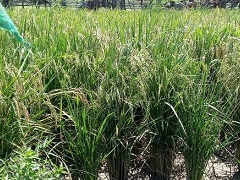 Comparative Cropping in Buluto.
Comparative Cropping in Buluto.
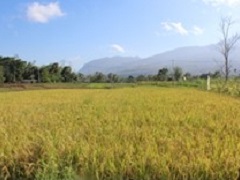 Comparative Cropping in Maliana I.
Comparative Cropping in Maliana I.
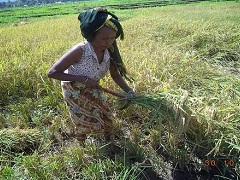 Farmer in Maliana I harvesting the Comparative Cropping.
Farmer in Maliana I harvesting the Comparative Cropping.
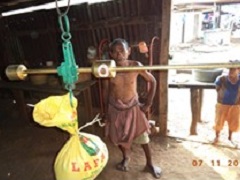 Farmer observing the yield survey conducted by the Project.
Farmer observing the yield survey conducted by the Project.
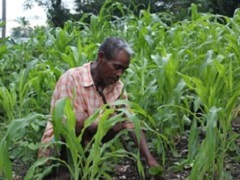 Farmers' acitivities (1) in Malina I before entering the the next cropping of rainy season.
Farmers' acitivities (1) in Malina I before entering the the next cropping of rainy season.
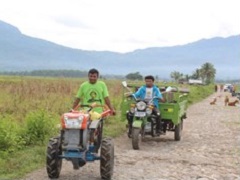 Farmers' acitivities (2) in Malina I before entering the the next cropping of rainy season.
Farmers' acitivities (2) in Malina I before entering the the next cropping of rainy season.
- About JICA
- News & Features
- Countries & Regions
- Our Work
- Thematic Issues
- Types of Assistance
- Partnerships with Other Development Partners
- Climate Change / Environmental and Social Considerations
- Evaluations
- Compliance and Anti-corruption
- Science and Technology Cooperation on Global Issues
- Research
- JICA Development Studies Program / JICA Chair
- Support for the Acceptance of Foreign HRs / Multicultural and Inclusive Community
- Publications
- Investor Relations
